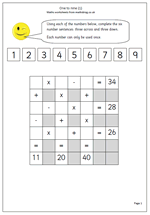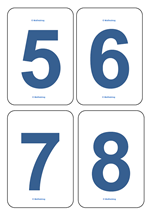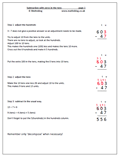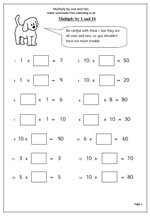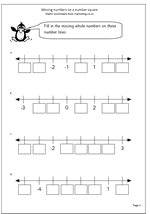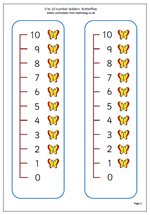Here is a tricky little puzzle which is aimed at Year 6 or upper juniors (9/11). Ideal for wet breaks!
Using just the digits 1 to 9 complete the number sentences, both across and down, so that they are all correct.
A good knowledge of tables is needed, together with the ability to add and subtract mentally.
The hardest part of this puzzle is getting started and the best approach is to use trial and improvement by picking one row or column which can only have a limited number of possibilities. This might well not be the first row across or column down.
Looking at this particular puzzle the first row is a x b – c = 34. Start by looking at combinations of numbers that when multiplied make more than 34 (but not more than 43 as the maximum to subtract is 9) and then see which number can be subtracted to leave 34.
An important note on this: all calculations are done in the order shown: Bodmas does not apply.
